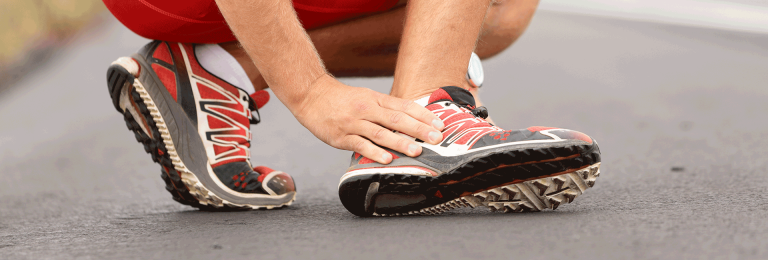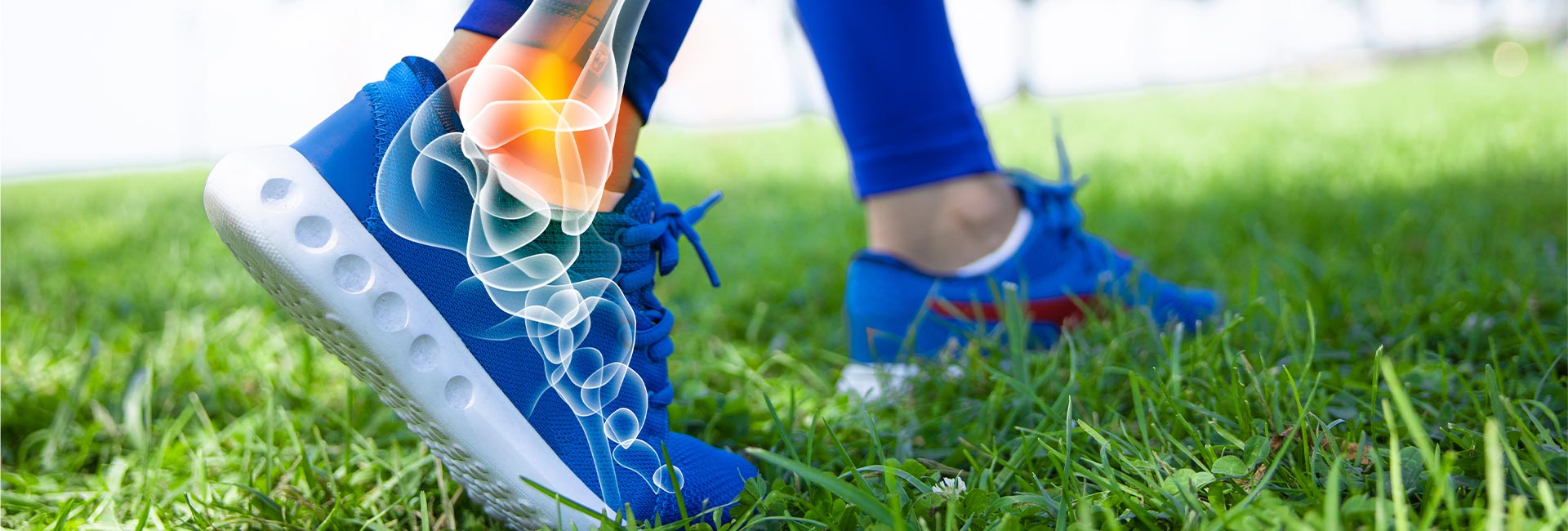As a physical therapist, I often work with patients who have experienced ankle injuries or have issues with ankle mobility, strength, and balance. The ankle is a crucial joint in the body that supports our weight, allows us to move, and helps us maintain balance. Let’s highlight the importance of ankle flexibility, strength, and balance and share five effective exercises that can help you improve these areas.
Exploring the benefits of ankle flexibility, strength, and balance.

Ankle flexibility is essential for proper movement and injury prevention. A lack of ankle flexibility can lead to compensations in other areas of the body, such as the knees and hips, leading to increased stress and the risk of injury.
Ankle strength is important for stability and injury prevention. Weak ankle muscles can lead to instability and increase the risk of ankle sprains or other injuries.
Ankle balance is essential for overall body balance and coordination. Good ankle balance can help prevent falls and improve athletic performance.
Weak ankles are a common condition in which the muscles, ligaments, and tendons surrounding the ankle joint are not strong enough to support the joint properly. This can lead to instability, pain, and a greater risk of ankle sprains and other injuries.
What causes weak ankles?
There are several factors that can contribute to weak ankles, including:
- Lack of exercise or physical activity
A sedentary lifestyle or a lack of regular exercise can weaken the muscles around the ankle joint, making it more prone to injury.
- Previous ankle injuries
If you’ve had an ankle sprain or other injury in the past, it can weaken the ligaments and tendons around the joint, making it more vulnerable to future injury.
- Poor footwear
Wearing shoes that don’t provide adequate support or have poor traction can increase your risk of ankle injuries. Choose your shoes wisely!
- Poor balance or proprioception
Balance and proprioception are the body’s ability to sense where it is in space and control movement. If these are impaired, it can increase your risk of ankle injuries.
- Certain medical conditions
Certain medical conditions, such as arthritis or neuropathy, can weaken the muscles and nerves around the ankle joint, making it more susceptible to injury.
To address weak ankles, it is important to work on strengthening the muscles, ligaments, and tendons around the joint. This can be achieved through exercises such as calf raises, ankle circles, and balance training. It is also important to wear proper footwear, practice good balance and proprioception exercises, (try these 4 simple moves to boost your balance) and seek medical attention if you have any ongoing ankle pain or instability. A physical therapist can help develop a personalized exercise program to address weak ankles and reduce your risk of injury.
5 moves for ankle flexibility, strength and balance.
Heel Raises
Heel raises are an excellent exercise for improving ankle strength. To perform this exercise, stand with your feet hip-width apart, and lift up onto the balls of your feet. Slowly lower back down to the ground. Repeat for 3 sets of 10 reps. For an increased challenge, perform with only one leg.
Single Leg Balance with Hip Hinge
Single leg balance is an effective exercise for improving ankle balance. To perform this exercise, stand on one leg, hinge forward at the hip on the standing leg and keep the opposite leg straight moving backward. You may allow the stance leg’s knee to bend slightly, then come back up to the starting position. Repeat with the other leg.
Ankle Circles
Ankle circles are a great exercise for improving ankle mobility and flexibility. To perform this exercise, stand with your toes on the ground slightly behind you to the side. Slowly rotate your foot in a circular motion, first clockwise and then counterclockwise. Repeat with the other foot. Repeat for 15 repetitions on each side.
Heel Walks
Heel walks are an excellent exercise for improving ankle strength. To perform this exercise, stand with your feet hip-width apart and lift your toes off the ground. Walk forward on your heels for 20-25 steps then walk back to the start. Repeat for 3 sets For an added challenge, do this same exercise while walking backwards.
Heel Elevated Squats
This exercise targets the muscles in your legs, including your quadriceps, hamstrings, and glutes, as well as your calves and ankles. By elevating your heels, you allow for greater ankle dorsiflexion, which can help to improve ankle mobility and reduce the risk of injury. As with any exercise, it is important to use proper form and technique to prevent injury and get the most benefit from the exercise.
Ankle flexibility, strength, and balance are essential for proper movement, injury prevention, and overall body balance and coordination. Incorporating these five exercises into your workout routine can help reduce the risk of injury and improve athletic performance.
If you have any concerns about your ankle mobility, strength, or balance, speak with your physical therapist, who can help develop a personalized exercise plan to meet your individual needs.
Bonus Exercise — Ankle Alphabets!
The ankle alphabet is a simple exercise that can help improve ankle mobility and flexibility. To perform this exercise, sit in a chair with your foot off the ground. Trace the letters of the alphabet with your foot, using your ankle to move your foot in different directions. Repeat with the other foot.
Learn more about ankle health from these Ask Our Experts posts!

Is it normal for my ankle & entire foot to still swell months after injury?
Is it normal for an ankle & entire foot to swell after a fracture with torn fibers & sprained ligaments long after rehabilitation?

Recurring ankle aprain – what to do?
Four years ago I sprained my ankle in a misstep off a riser. Now I have rolled it 3 times in as many years. What can I do to stop this from occurring?

Why do I have a tingling sensation in the front of my ankle when I stretch my hamstrings?
Why do I have a tingling sensation in the front of my ankle when I stretch my hamstrings? I have been weight training for 2 years and usually stretch after I workout.

Start your physical therapy journey today.
As physical therapists, we know the importance of movement for overall health and well-being. From injury recovery to achieving optimal performance, our passion is to help every patient reach their goals and live an active, pain-free life. Get started with PT today!
